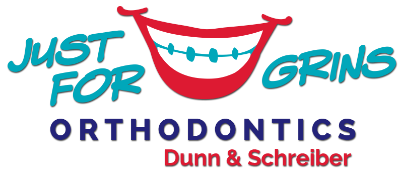Wearing your retainer after braces or Invisalign® treatment is essential for maintaining your beautiful end results—but you already knew that.
So, if you and your retainer are in it for the long haul and with each other every night, does that mean it needs to be replaced at some point? Or does it magically retain its effectiveness for a lifetime?
As you can imagine, your retainer will wear down over time and you will need a replacement retainer to keep your smile in its best shape for years to come.
Here’s what you need to know about replacing your retainer. We’ll cover:
- How often you should replace your retainer
- Signs that indicate you need a replacement retainer
- How to replace your retainer
How often should you replace your retainer?
It depends on the type of retainer you have and how well you take care of it. If you tend to neglect your retainer, leave it in napkins and mistake it for trash, or leave it on the table and your dog gets a hold of it, you’re probably going to be visiting Dr. Dunn or Dr. Schreiber for a replacement retainer sooner than later!
The best way to prolong your retainer’s life is by cleaning it in the morning when you wake up, soaking it in a cleaning solution regularly, and storing it in a clean retainer case any time it’s not in your mouth.
- Essix clear retainers typically last about 3 years before they need to be replaced.
Your retainer may need to be replaced sooner than the average replacement time; it all depends on how you care for it. Here are a few ways to tell if you need to replace your retainer:
5 Ways to Tell if You Need a Replacement Retainer
1. Your retainer doesn’t fit.
Your retainer may become loose or feel like it fits too tight after a while. Retainers naturally start to loosen up as they wear down. It’s important to fix a loose retainer, because an ill-fitting retainer won’t support your teeth, making them likely to shift out of place!
When the teeth shift out of place, or ‘relapse’ back to their pre-treatment position, you may need another orthodontic treatment to realign them. Take care of your retainer and replace it when necessary to ensure that you keep the smile you worked so hard for.
It’s also important that you don’t use any hot water with your retainer, especially an Essix retainer. Don’t put your retainer through the dishwasher or use any harsh chemicals on it; this is how retainers become warped and misshapen.
2. You have a cracked retainer.
If you notice some small cracks in your retainer, or you dropped it and it created a crack, this indicates that you’ll need to replace your retainer.
Over time, small cracks will progress into larger cracks, which will reduce the effectiveness of your retainer and create additional spaces for bacteria to grow. Bacteria growth is the last thing you want; wearing a dirty retainer can lead to bad breath, cavities and gum disease.
3. You have a chipped retainer.
Similar to a cracked retainer, a chipped retainer must be replaced as soon as possible. Chips can reduce the effectiveness of your retainer, and they can damage your cheeks or tongue if the chips create any sharp ends.
It’s never a good idea to fit a chipped or cracked retainer in your mouth. You don’t want pieces of your retainer falling off or your tongue getting nicked by a crack.
4. You lose your retainer.
This one is a fairly obvious way to determine if you need a new retainer. If you lose your retainer, you’ll have to get a replacement retainer. This happens more often than you may think! Retainers end up in the trash wrapped in a napkin, in the dog’s mouth, at the restaurant you just ate at, in your hotel drawer—it happens.
If you lose your retainer, it’s important that you give us a call as soon as possible. We want to prevent your teeth from shifting, especially if it’s toward the beginning of your retention phase when the teeth are most susceptible to moving.
5. Your bottom retainer is loose.
If you have a bottom retainer, or “permanent” retainer on your lower teeth, it’s important to know when to replace it. These retainers are considered “permanent” retainers, because they can’t be removed on your own; they have to be removed by your orthodontist, but they aren’t truly permanent and will likely have to be replaced at some point.
Permanent retainers can last about 20 years, so you shouldn’t experience a loose bottom retainer for quite a while. If your bottom retainer does loosen up, contact us as soon as possible and we’ll schedule an appointment to reattach your retainer.
How do I get a new retainer?
You simply contact our team and let us know that you need a replacement retainer!
If you weren’t previously one of our patients, we can still create a new retainer for you. We will discuss retainer costs when you visit us or reach out to us.
Still have questions about replacement retainers?
Please don’t hesitate to reach out to us with any questions! We love to hear from you. We’re here to guide you through your treatment process, from your very first visit, to your last appointment.
If you’re looking for a top orthodontist in Montgomery, Millbrook or Wetumpka, we’d love to meet you! Request a complimentary exam for you or your child today.



